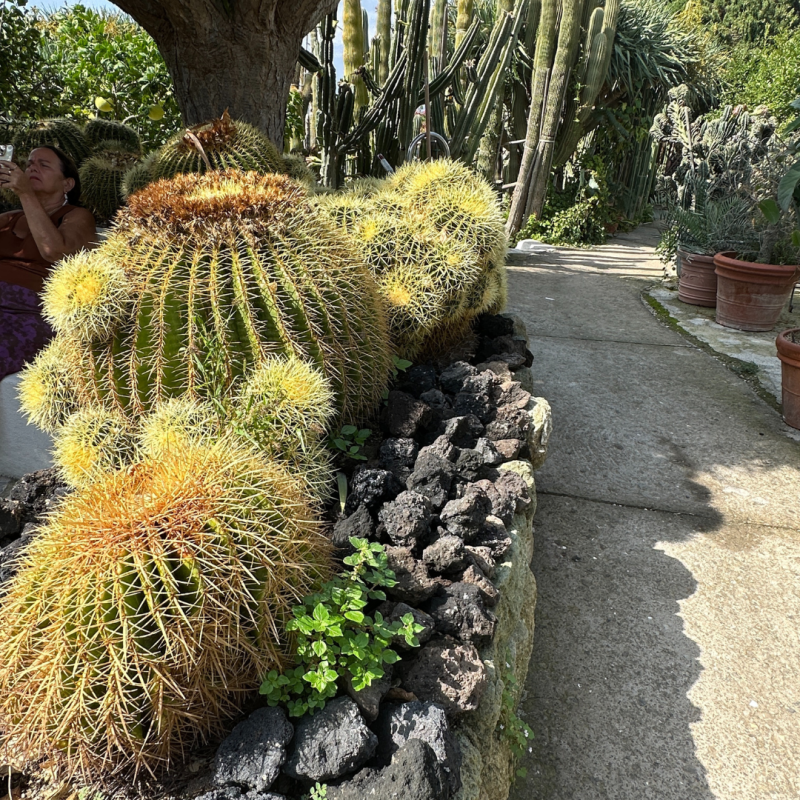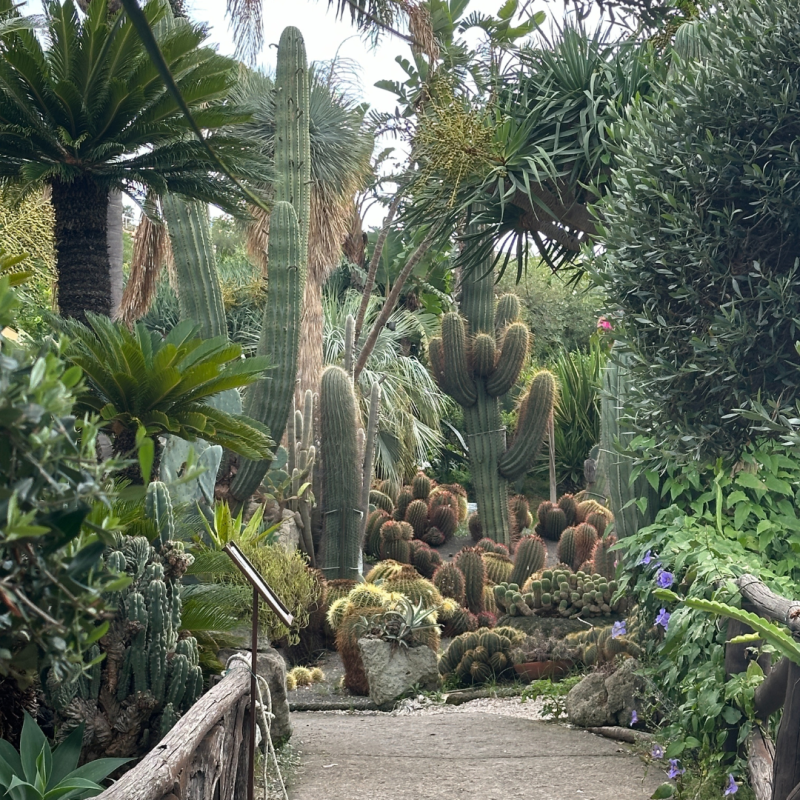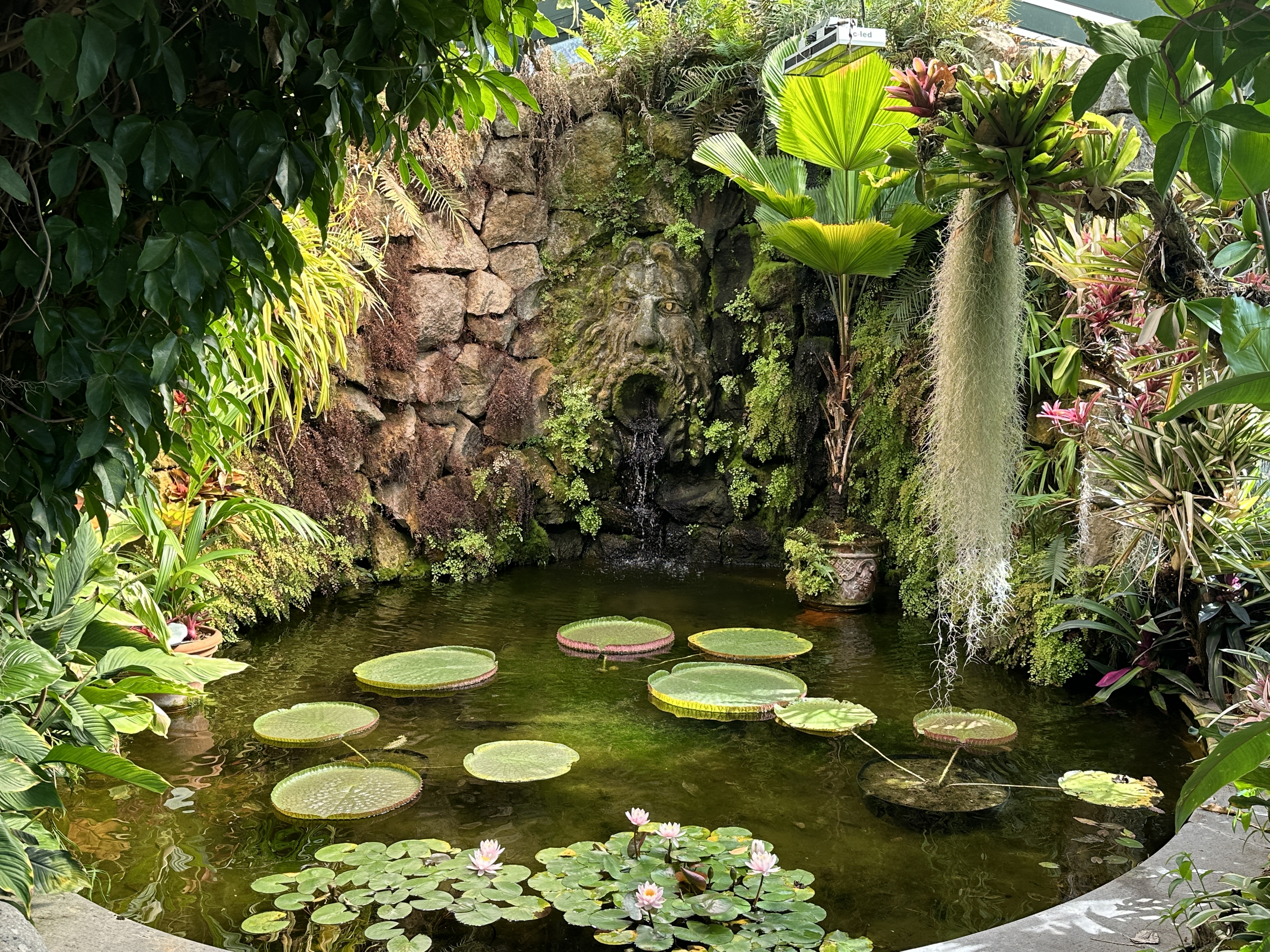Whilst travelling through Italy last year, we came across a wonderful garden called La Mortella that we just had to visit. However, we were equally delighted to discover the succulent-rich garden of Giardini Ravino, located less than one mile further up the hill.

Giardini La Mortella
Designed by world-famous landscape designer Russell Page, La Mortella, off the coast of Naples on the Island of Ischia, was commissioned by Lady Susana Walton. Her husband, William Walton, was one of the most important British composers of the 20th Century.
The frost-free island is full of botanic rarities that climate-restricted British gardeners can only dream about, such as the jade vine (Strongylodon macrobotrys), Dutchman’s pipe (Aristolochia littoralis), grapefruit, Amazon lily (Victoria amazonica) and gigantic subtropical trees like kapok (Ceiba speciosa) that reach up to 30 metres tall.
The garden is defined by its steep wall of trees that provide shade as visitors climb for a view of the valley below. As a ‘tree tragic’, it was the first time I had experienced the rare privilege of being able to view at eye level subtropical trees like Kapoks in their full range – from the thorny trunk at the base to the canopy of spiky flower stems above.
This garden was designed for frustrated Englishmen deprived of sunshine whose dour winter hours were spent reading about sunnier climes. It’s a little sad that instead of English gardeners celebrating the precious Italian sunshine, as they may in the neighbouring Giardini Ravino succulent garden, the overplanting of trees blocks the sun from reaching the valley floor.
But for Mediterranean locals, as well as Australians who suffer a surfeit of sunshine, the shaded valley is a welcome retreat. La Mortella is a Partner Garden of the RHS.
Giardini Ravino
In the nearby town of Forio is the magnificent garden of Giardini Ravino. Labelling it simply as a cactus garden is misleading, as it is a superbly inspiring example for all Australian backyard gardeners.
Whilst it is promoted as containing the biggest and widest collection of succulents in Europe, being a so-called ‘non-succulent cottage gardener’, I was stunned and impressed by the beauty of the combinations of garden plants that we usually avoid planting. The decorative elements of many gardens are provided by perennials and cottage annuals that need planting, pruning and weeding, whilst this garden was complete and impressive without any herbaceous perennials or laborious annuals.
Above all, the visual attraction of gardening with succulents is that once planted, they provide permanent everlasting form rather than temporary or seasonal interest. Being evergreen and low-maintenance, they provide year-round impact and structure compared to herbaceous cottage garden plantings that often retreat underground.
Planted among the magnificent evergreen forms of barrel cacti and cycads are rare climbers, edibles and interesting structural plants. Successes from La Mortella are repeated here, including the exotic vine Dutchman’s pipe and grapefruit, along with oranges, lemons, capers and avocados. For structure, there are evergreen ponytail palms, dragon trees, cycads, kapok trees and common shrubs such as lavenders, oleanders and strelitzias.
This style of gardening would perform exceptionally well in all our coastal capitals from Perth to Adelaide, Melbourne, Sydney and Brisbane, i.e. CZ 10/11 but not inland 100 kilometres from the coast in Canberra or Tasmania.

